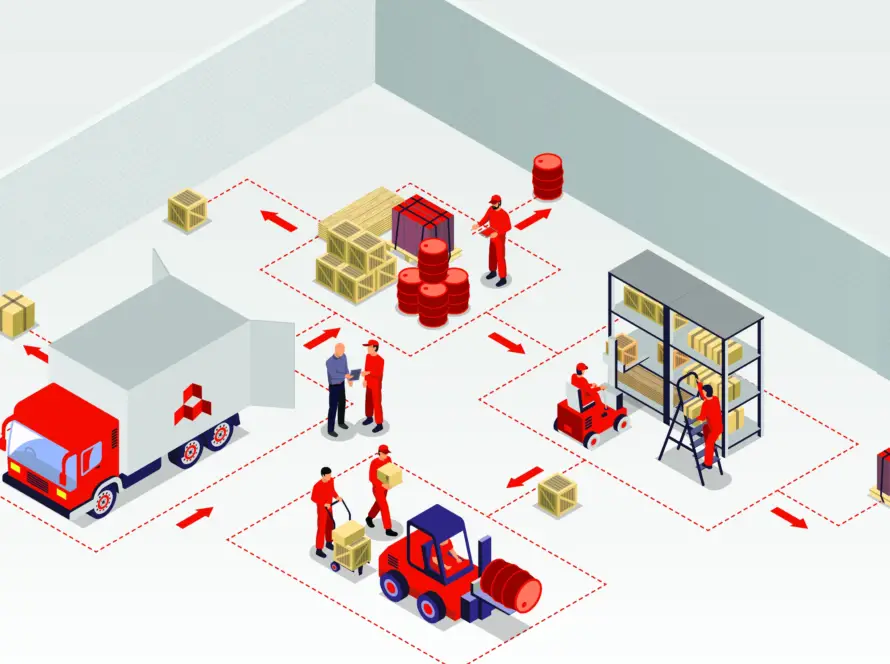Process of Supplier Relationship Management
In today’s hyper-connected and often volatile global marketplace, the companies you rely on – your suppliers – are more than just vendors. They are strategic partners who can significantly impact your bottom line, innovation pipeline, and overall resilience. Simply managing transactions isn’t enough anymore. To truly thrive, businesses need a structured approach to nurturing these critical relationships. This is where Supplier Relationship Management (SRM) comes in.
Supplier Relationship Management (SRM) is a systematic approach companies use to plan, manage, and develop their interactions with the suppliers providing goods and services. It’s about strategically determining which suppliers are most critical to the business’s success and building stronger, mutually beneficial partnerships with them.
It integrates business practices, technology (SRM software), and people to manage the entire supplier lifecycle, from initial onboarding and contract negotiation to performance evaluation and long-term development. It’s a cornerstone of effective supply chain management and strategic sourcing.
Know More About: What is Supplier Relationship Management (SRM)?

SRM Process: A Step-by-Step Guide
While the specifics can vary based on company size and industry, a typical, effective SRM process follows these fundamental steps:
Step 1. Supplier Segmentation
Not all suppliers hold the same strategic importance. Segmentation involves categorizing your suppliers based on various criteria to determine where to focus your SRM efforts.
How it’s done:
Spend: How much do you spend with them?
Risk: How critical are their goods/services? What’s the impact if they fail?
Strategic Importance: Do they provide unique capabilities or access to innovation? Are they sole-source?
Potential for Collaboration: How willing and able are they to partner on improvements or new initiatives?
Why it matters: Segmentation allows you to tailor your relationship strategies and allocate resources effectively. You’ll manage a critical, innovative partner very differently than a supplier of low-value, easily replaceable office supplies. Common segments include Strategic, Important/Leverage, Transactional, and Bottleneck suppliers.
Step 2. Develop Supplier Strategy & Governance
Based on the segmentation, you define specific strategies for managing relationships within each category. This also involves setting up the governance structure – who is responsible for managing which supplier relationships?
How it’s done:
Define Objectives: What do you want to achieve with each segment (e.g., cost savings for leveraging suppliers, joint innovation with strategic partners)?
Assign Ownership: Clearly designate relationship managers (often from procurement, supply chain, or even business units).
Establish Communication: Determine how often and through which channels you will interact with different supplier segments.
Set Governance Rules: Define escalation paths, meeting structures, and decision-making processes.
Why it matters: A clear strategy ensures consistency and alignment across the organization. It prevents key relationships from being managed ad-hoc and provides a framework for accountability.
Step 3. Execute the Supplier Strategy
This is where you put the plans into action. It involves the day-to-day and strategic interactions guided by the defined strategies.
How it’s done:
Contract Management: Negotiating favorable terms, ensuring compliance.
Onboarding: Effectively integrating new strategic suppliers.
Placing Orders & Managing Transactions: Efficient operational procurement.
Holding Strategic Meetings: Conducting business reviews with key partners.
Initiating Collaborative Projects: Working together on cost, quality, or innovation initiatives.
Why it matters: This is the operational heart of SRM, turning plans into tangible actions and results.
Elevate Your Supplier Realationship with Experts Help!
Step 4. Measure Supplier Performance (Supplier Performance Management - SPM)
Systematically tracking, analyzing, and evaluating how well suppliers are meeting agreed-upon expectations and contractual obligations.
How it’s done:
Define KPIs: Establish clear, measurable metrics (e.g., on-time delivery, quality defect rates, cost reduction contributions, innovation input, responsiveness, sustainability compliance). KPIs should align with the supplier segment and strategy.
Data Collection: Gather performance data through internal systems, supplier self-reporting, audits, and feedback.
Supplier Scorecards: Consolidate performance data into easily understandable scorecards.
Performance Reviews: Conduct regular reviews (e.g., quarterly business reviews – QBRs) with key suppliers to discuss performance, address issues, and identify improvement opportunities.
Why it matters: SPM provides objective data for decision-making, identifies areas needing improvement, recognizes top performers, and forms the basis for constructive dialogue with suppliers. “What gets measured gets managed.”
Step 5. Foster Supplier Collaboration & Development
Actively working with key suppliers to improve their capabilities, drive mutual value, and build long-term, resilient partnerships.
How it’s done:
Two-Way Communication: Establish open and honest communication channels.
Feedback Mechanisms: Provide constructive feedback and be open to receiving it.
Joint Improvement Projects: Collaborate on initiatives to enhance efficiency, quality, or sustainability.
Innovation Platforms: Create forums for suppliers to share innovative ideas.
Supplier Development Programs: Invest in training or resources to help critical suppliers improve specific capabilities that benefit your business.
Why it matters: Collaboration turns a simple buyer-seller dynamic into a strategic partnership, unlocking significant potential for innovation, risk reduction, and competitive advantage.
Step 6. Manage Supplier Risk (Supplier Risk Management)
Continuously identifying, assessing, monitoring, and mitigating risks associated with your supply base. This is not a one-off task but an ongoing part of the SRM process.
How it’s done:
Risk Identification: Pinpoint potential risks (financial, operational, geopolitical, reputational, cybersecurity, compliance, environmental).
Risk Assessment: Analyze the likelihood and potential impact of identified risks.
Mitigation Planning: Develop strategies to reduce or manage high-priority risks (e.g., finding alternative suppliers, holding safety stock, collaborative contingency planning, contract clauses).
Ongoing Monitoring: Keep track of supplier health and market conditions.
Why it matters: Proactive risk management protects your business from disruptions, reputational damage, and financial losses originating within your supply chain.
Step 7. Continuous Improvement & Technology Enablement
SRM is not static. It requires ongoing refinement based on results, feedback, and changing business needs. Technology often plays a crucial role here.
How it’s done:
Review SRM Effectiveness: Regularly assess if the process, strategies, and tools are delivering the desired outcomes.
Gather Feedback: Solicit input from internal stakeholders and suppliers.
Adapt Strategies: Adjust segmentation criteria, KPIs, and relationship approaches as needed.
Leverage Technology: Implement or optimize SRM software or platforms to automate tasks, improve data visibility (scorecards, risk alerts), enhance communication, and provide analytics.
Why it matters: Continuous improvement ensures your SRM program remains relevant, efficient, and effective in driving value and mitigating risk over the long term.
You May Also Like to Read: What is Supply Chain Risk Management?

Key Considerations in Implementing SRM Successfully
Understanding the SRM process is vital, but successful SRM implementation demands more. Putting theory into practice depends on several critical factors within your organization. Let’s explore the key considerations:
Executive Sponsorship
Getting top leaders actively involved is crucial for successful SRM implementation. Their visible support shows that supplier relationship management is a priority. This commitment helps secure necessary resources (people and budget), drives adoption across departments, and ensures the SRM strategy aligns with overall business goals, making the whole effort more likely to succeed.
Cross-Functional Collaboration
Effective SRM isn’t just a job for procurement. It needs teamwork involving supply chain, operations, finance, quality, and R&D. Working together ensures everyone shares insights, understands different aspects of supplier performance, and aligns on goals. This collaboration breaks down silos and leads to better decision-making in your supplier relationships.
Change Management
Implementing SRM often changes how people work. Good change management means clearly communicating the why (the benefits of SRM) and the how (the new SRM process) to everyone involved. Explaining expectations and providing training helps overcome resistance, ensures smoother adoption of new practices, and makes the transition to a more strategic supplier management approach successful.
Technology Investment
While not always day-one essential, investing in dedicated SRM software or SRM tools can significantly boost your program. This technology helps automate tasks, track supplier performance data consistently, manage risk alerts, and improve collaboration through shared platforms. Especially for larger companies, SRM tools provide the efficiency and visibility needed for effective management.
Conclusion
Supplier Relationship Management is no longer a niche practice for large corporations, it’s a fundamental business discipline for any company serious about optimizing costs, mitigating risks, driving innovation, and building a resilient supply chain.
By implementing a structured SRM process – segmenting suppliers, developing tailored strategies, executing effectively, measuring performance, fostering collaboration, managing risk, and continuously improving – you move beyond simple vendor management. You start building strategic partnerships that create sustainable competitive advantages.
Thanks For Reading: Process of Supplier Relationship Management (SRM): A Comprehensive Overview
Powered By 360Presence

